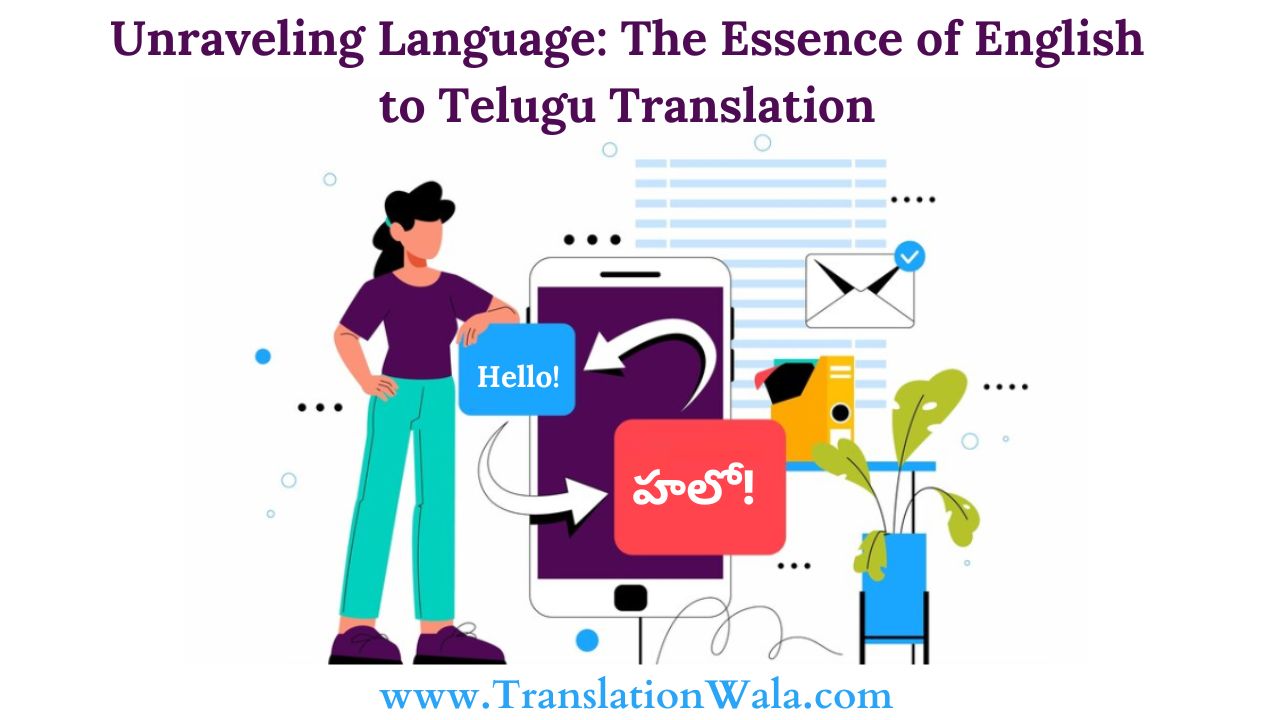It’s not enough to just find words that are similar in English and Telugu to bridge the gap. There is a fine line between getting across the main idea of a message and incorporating it into the complex fabric of the target language. The subtleties that make English to Telugu translation such an interesting art form are explored in this piece.
Understanding the Depths: Nuances of Language
The language groups of English and Telugu are very different. English is Indo-European and Telugu is Dravidian. Their grammar structures, sentence patterns, and cultural connections are all affected by this natural difference. When translating something literally, it’s not always possible to get across the intended message or tone.
One example of a language that agglutines a lot is Telugu. Words are made by adding prefixes, which give a word more than one meaning. In order to translate “I went to the market” into Telugu, the word “went” needs to be broken down into its parts: past tense, single speaker, and action. In Telugu, this could be said as “Nenu (I) santoshamgaa (happily) vanta (came) vanta (past tense)” to emphasize the speaker’s mood while keeping the main point the same.
Cultural Crossroads: Idioms and Expressions
Figurative language is the hardest part to translate. These bits of words hold culture connections and past information. It wouldn’t make sense to translate “It’s raining cats and dogs” into Telugu. In this case, the translation acts as a cultural bridge by choosing a similar phrase that makes the reader feel the same way about a heavy rainstorm. A better choice might be “Aadityudu inni allu champithe (The sky is pouring water today)”.
The Power of Context: Formal vs. Informal
The level of protocol is very important. In English, there is a clear difference between official and relaxed ways of speaking. But Telugu has built-in levels of politeness that come from the way verbs are conjugated and how names are used. A good English to Telugu Translation can pick up on these subtleties and changes the tone and range to fit the audience. A business paper needs a different method than a friendly email when it comes to translation.
Also Read: Harmony in Diversity: English to Bengali Translation Excellence
Beyond Words: The Untranslatable
Some ideas might not be able to be translated directly. Take the English word “cozy,” which makes you think of warmth, comfort, and home. All of these subtleties might not be able to be summed up in a single Telugu word. In some cases, the translation may need to use a specific word like “udina nuvvuundi” to mean “feeling warm” or “sukhamugaa undi” to mean “feeling happy.”
The Art of the Translator: Balancing Fidelity and Fluency
While staying true to the original text, the best translation is also easy to read in the target tongue. Even if the translation is correct in terms of grammar, it might not sound natural in Telugu. On the other hand, a good version might not stay true to the original idea. The skilled translator tries to find a middle ground so that the message gets across clearly and beautifully.
Technology’s Role: Aiding the Human Touch
Machine translation tools are now very advanced and can do simple and quick readings. But they often have trouble with phrases, cultural references, and the finer points of language. These tools can be helpful, but a person translation is still the best option. For high-quality versions, the translators must understand regional differences and be able to change the writing to fit the audience.
Conclusion: A Journey of Discovery
When you translate from English to Telugu Translation, you are always learning about the beauty and difficulty of language. It’s not enough to just find the right words; you also need to understand the cultural background, the tone you want to use, and the little things that make conversation interesting. Translators build bridges between languages and countries by getting to the heart of the matter. This makes it easier for people to understand and get along without fighting.
